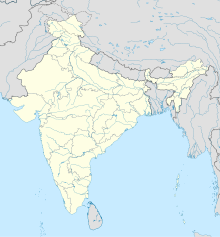|
Battle of Kannanur
The Battle of Kannanur took place in 1342–43, in what is now Kannanur, Tamil Nadu, India. This clash involved the Hoysala dynasty and the Madurai Sultanate. King Ballala III of the Hoysalas led an expedition to conquer the Coromandal coast but faced opposition from the Madurai Sultan, Ghiyas-ud-din Muhammad Damghani. Initially, the Hoysala forces triumphed in the first encounter. However, they were defeated by the Sultan's forces during the subsequent siege of the Kannanur fort, where they were defeated by the determined Madurai forces. The retreat of the Hoysalas led to the capture and execution of Ballala III and the seizure of the Hoysala treasury by the Madurai Sultan. This significant event marked a turning point, resulting in the decline of Hoysala power in the region, leaving a lasting impact on the area's history. BackgroundVeera Ballala III, the King of the Hoysala dynasty, found himself embroiled in conflicts with the Delhi Sultanate, resulting in the loss of his territories. In 1340, Ghiyasuddin Damghani assumed the throne of the Madurai Sultanate. The Madurai Sultanate had initially been a part of the Delhi Sultanate but gained independence during the rule of Jalaluddin Ahsan Khan in 1335.[3] Kannanur held significant historical importance as a city within the Hoysala dynasty, having even served as its capital at certain times. However, the Hoysalas eventually lost control of Kannanur to the Delhi Sultanate, and subsequently, it became a part of the Madurai Sultanate's territory.[4][5] Initial conflictIn 1342, Ballala III embarked on a campaign to capture the Coromandel coast from the Madurai Sultanate. The Hoysala forces, comprising 100,000 soldiers, encountered opposition from Ghiyasuddin's Madurai forces near Kannanur. After an initial defeat, the Madurai forces, numbering 6,000 men, were compelled to retreat towards Madurai.[6]  Final conflictThe Hoysala forces initiated a march towards the Kannanur fort with the intent to besiege and capture it. Ballala led a six-month-long siege and extended an offer to the Sultan to surrender. However, Ghiyasuddin, with a cavalry of 6,000 strong, personally advanced toward the Hoysala frontier and succeeded in capturing Ballala. Following the loss of their king, the Hoysala forces were compelled to retreat. Ballala was executed after his treasury was captured.[7][8][6][9][10][11] References
|
||||||||||||||||||||||||||||

